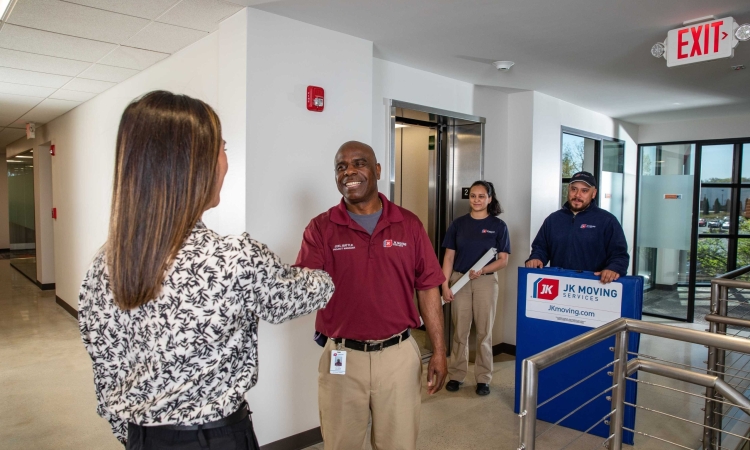How to know when it’s time to move your office
Planning an office move can feel overwhelming, as you start your move planning, bring a respected real estate broker or construction expert to the table early to talk about your needs, brand, and budget for your office relocation. They will provide you with expert advice to get started.
Key factors for a successful office relocation:
1. Future planning
You’re not moving for today, you’re moving for five or ten years. Think about how your new space will meet your needs over time. Are you in growth mode? Can you address those needs flexibly through archived storage and hybrid schedules for some employees?
2. Set a budget
It’s important to have a clear budget in place that accounts for all the costs that may be associated with the move, including hiring a moving company, buying new furniture and equipment, updating technology, packing materials, etc.
3. Market research
If your region has been overbuilt and there’s a glut of office space available, use it to your advantage. Ask for concessions and build-out allowance. The longer the lease you’re willing to commit to, the more likely you are to get what you want.
4. Establish a timeline and coordination
Establish a clear timeline for your relocation, including the date and time for office design and setup, packing, loading, transporting, unloading, and unpacking. A clear timeline will help you keep organized and minimize downtime and disruption to your business operations.
 5. Transparent communication
5. Transparent communication
Communicate the details of your office move to your employees, suppliers, partners, and clients well in advance. Provide clear information about the timing, location, and logistics of the move to avoid confusion and reduce disruptions.
6. Space planning and layout
Think about the size and layout of your new space. Is it large enough to accommodate your current and future needs? The same square footage can hold 50 employees or 100, depending on your office plan, construction, and density. Work with an office space designer to plan the placement of furniture and equipment to optimize the workflow and maximize productivity and efficiency.
7. Choose the right location
Location for your new office is everything. Consider factors such as safety, accessibility, daycare, parking, transportation links, and proximity to clients, suppliers, and employees. These everyday concerns will affect your business operations from the moment you’re in the new location.
8. Partner with professional movers
Bring your moving and storage partner to the table early and consult with them often. Professional, experienced moving companies know the lay of the land. They’ve done this before, and they know what to look for. You can rely on them to provide suggestions to help you plan a successful office relocation from the early stages of your planning that could end up saving you both time and money.
Moving an office can be a complex and challenging process that requires proper and thoughtful planning and execution to ensure a smooth transition. Taking the time to consider these items will help you get started on the right path to a successful office move.
FAQs on Office Moves
-
How to plan an office relocation?
A clear office move planning guide will help map out every stage, from packing to setting up at the new location.
-
What are the considerations for office relocation?
Consider the logistics of the current office, communication with staff, and how the moving process will impact productivity.
By following these steps, your workplace relocation planning will go smoothly, ensuring minimal disruption to daily operations.


